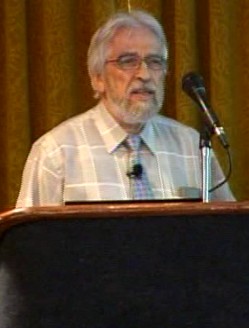A New Approach for Study of Gravity and Inertia from the Point of View of BSM-Supergravitation Unified Theory
Year: 2009 Pages: 19
Keywords: gravity, inertia
According to BSM-SG concept the physical vacuum contains superfine underlying structure called Cosmic Lattice (CL). The individual nodes of the CL structure are formed by four prism-like sub elementary particles held by SG forces and build in hierarchical orders from the two Fundamental Particles associated with the Planck's scale. The two types of CL nodes are arranged in a diamond-like lattice, following an alternative order with internode distance about 1E-20 (m). The individual CL node has two set of axes: xyz ? orthogonal and abcd ? axes with 109.5 deg between them and aligned with the prisms axes. The SG forces along abcd axes are thousand times stronger than along the xyz axes. EM waves involve oscillations along xyz axes, while the Newtonian gravity is a propagation of the strong SG forces by abcd axes. Small gaps between the CL nodes are kept by the specifics of the SG law while this allows complex oscillations with two identifiable cycles: one with a proper frequency of 1.93E29 Hz and a second one with the Compton's frequency 1.2356E20 Hz. The CL nodes, regarded as Phase Locked Loop oscillators, are synchronized at their proper frequency by phase propagated with a speed of light for the length equal to the Compton wavelength. This feature assures the constancy of light velocity and a normal propagation of the Newtonian gravitation. BSM-SG predicts that if the CL node synchronization around an object is partly disturbed, both the gravitational mass and the propagation of light will be affected. BSM-SG unveiled also the structure of the electron that defines all of its QM properties. This allows to understand the possibility to affect the synchronization of the CL nodes by using the spin flipping of the electron. The theoretical prediction was tested and confirmed in a small-scale lab experiments. The observed effect is called Stimulated Anomalous Reaction to Gravity (SARG). According to BSM-SG this is a gravito-inertial effect that could be used for a propulsion mechanism of new type in which the force field is obtainable as a result of unidirectional change of the mass.
- S. Sarg, New approach for building of unified theory, may 2002 http://lanl.arxiv.org/abs/physics/0205052
- S. Sarg, A physical model of the electron according to the Basic Structures of Matter Hypothesis, Physics Essays, V16, N2, 180-195, (2003)
- Stoyan Sarg, Basic Structures of Matter ? Supegravitation Unified Theory, Trafford Publishing, 2006, ISBN 1412083877
- S. Sarg, BSM-SG Unified Theory, IX International Scientific Conference, Space, Time, Gravitation, 7-11 Aug 2006, St. Petersburg, Russia. (Conference Proceedings, 2007).
- Book reviews - Physics in Canada, V62, N4, pp. 206-207 (2006).
- S. Sarg, Gravito-inertial Propulsion Effect Predicted by the BSM - Supergravitation Unified Theory, 27th Annual SSE Meeting, June 25-28, 2008, Boulder, CO
- S. Sarg, Method and apparatus for spacecraft propulsion with a field shield protection, Patent pending, Appl. No. 2,638,66 / 25 Nov 2008, CIPO Canada.


